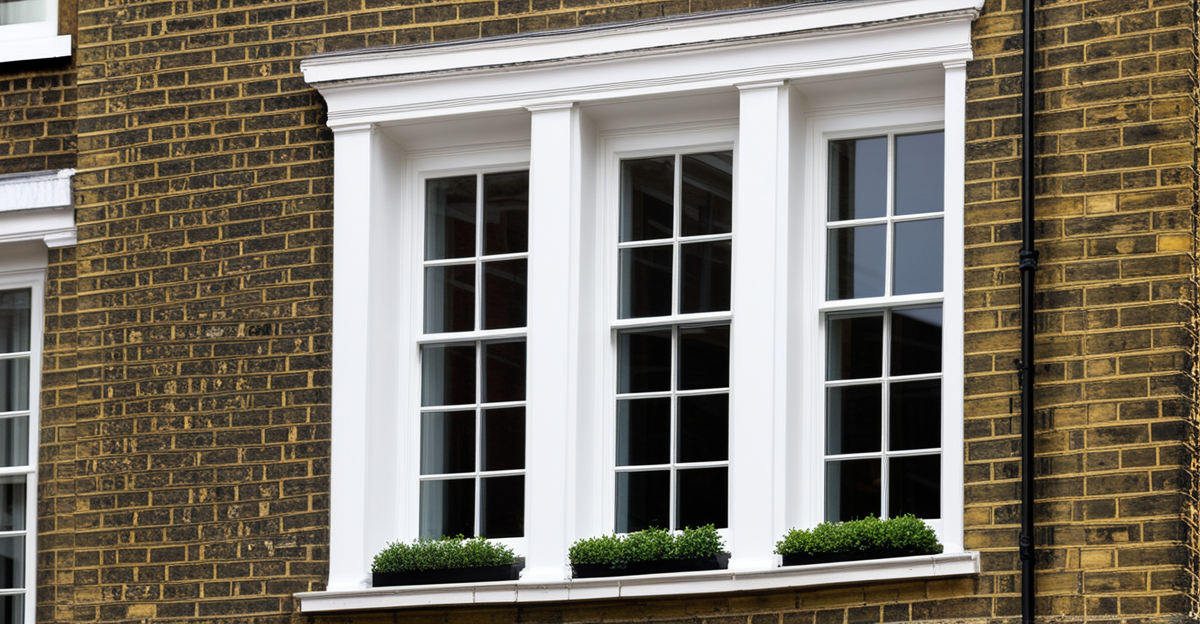Navigating Regulations for Window Upgrades in Grade II Listed Buildings
When dealing with Grade II listed building regulations, understanding the legal framework is essential. In the UK, planning permission for windows in these buildings hinges on preserving historical character while allowing necessary updates. This requires securing listed building consent before any alterations. Failing to obtain this consent can lead to legal consequences and invalidate any improvements made.
Planning permission for windows usually involves submitting detailed proposals to local authorities, demonstrating that the changes respect the original design and materials. Working closely with local authority conservation officers is crucial—they guide compliance with heritage conservation laws and ensure that installations complement the building’s significance.
Also read : Unlocking the secrets of preserving thatched roofs in rural england: expert advice and methods revealed
Consultation typically includes site assessments and discussions about materials, styles, and installation methods. Early engagement with conservation officers can streamline approvals and help anticipate potential objections. In some cases, alternative solutions might be recommended to balance functionality with preservation. Understanding these regulations upfront helps avoid costly delays and protects the historical value of Grade II buildings.
Selecting Energy-Efficient Windows Compatible with Historic Architecture
When upgrading windows in Grade II listed buildings, choosing energy-efficient windows requires balancing modern performance with heritage sensitivity. The key challenge is to select heritage building window options that maintain the building’s character while improving thermal efficiency. Unlike standard replacement windows, these options must respect design intricacies such as glazing bars, sash profiles, and frame materials.
In parallel : Transforming cardiff: the impact of new urban projects on real estate dynamics
Double glazing for listed buildings is often questioned. Contrary to popular belief, carefully designed double glazing for listed buildings can be installed without compromising the historic appearance. Slim-profile double-glazed units use advanced technology to remain discreet, matching traditional sightlines and preserving the window’s proportions.
Materials like hardwood or metal frames are preferred to replicate original fabric, complemented by specialized seals that enhance insulation without visible alteration. Choosing the right glazing technology also affects aesthetics: low-emissivity coatings reduce heat loss invisibly, helping meet energy standards expected in many upgrades.
Understanding these options enables owners to improve comfort and reduce energy costs while conforming to Grade II listed building regulations and ensuring compliance with UK heritage conservation laws.
Selecting Energy-Efficient Windows Compatible with Historic Architecture
Choosing energy-efficient windows for Grade II listed buildings requires careful attention to both thermal performance and historical integrity. Unlike modern replacements, heritage building window options must preserve original style, materials, and proportions while improving insulation.
Double glazing for listed buildings offers a popular solution but must be designed to avoid altering the window’s appearance. Slim-profile double glazing can fit within existing frames, retaining authentic sightlines. Alternatively, secondary glazing provides added insulation without replacing original panes.
Materials like timber remain preferred to maintain historic aesthetics. Modern uPVC or aluminium windows, although energy-efficient, are often unsuitable due to their visual impact. Instead, carefully crafted hardwood frames, treated for durability, ensure compatibility with Grade II listed building regulations.
Glazing technologies vary, including low-emissivity glass and warm edge spacers, both enhancing thermal efficiency with minimal visual change. By balancing craftsmanship with cutting-edge materials, property owners can meet UK heritage conservation laws while achieving meaningful energy savings. This integrated approach respects the building’s character and reduces environmental impact.
Navigating Regulations for Window Upgrades in Grade II Listed Buildings
Window upgrades in Grade II listed buildings must abide strictly by Grade II listed building regulations to protect architectural heritage. Before starting work, obtaining planning permission for windows is not optional; it requires a formal application detailing the proposed changes and justifications based on historic preservation. This ensures compliance with UK heritage conservation laws, which prioritize conserving original materials and design features.
Securing listed building consent is pivotal. Without it, any alterations risk legal penalties and may trigger orders for removal or restoration. The application process demands thorough documentation, including drawings and material specifications aligned with conservation standards.
Collaboration with local authority conservation officers is essential. These professionals provide guidance on meeting regulatory standards and help interpret the application’s compliance with Grade II listed building regulations. Early consultation often uncovers potential issues, enabling adjustments that satisfy both functional needs and heritage criteria. Understanding and respecting these legal frameworks supports successful upgrades that enhance energy efficiency while safeguarding historical integrity.
Navigating Regulations for Window Upgrades in Grade II Listed Buildings
Understanding Grade II listed building regulations is crucial before initiating any window upgrade. These regulations are designed to protect the building’s historic and architectural significance. Securing planning permission for windows often requires submitting detailed proposals aligned with UK heritage conservation laws to demonstrate that changes preserve the original character.
Obtaining listed building consent is mandatory; without it, alterations may be unlawful and subject to enforcement actions. The process involves close coordination with local authority conservation officers, who evaluate whether the proposed windows meet preservation criteria.
These officers provide invaluable guidance to ensure compliance with Grade II listed building regulations while recommending materials and designs sympathetic to the structure. Early collaboration reduces delays and helps avoid costly rejections.
In summary, navigating these regulations demands comprehensive preparation, well-documented plans, and respectful communication with conservation officers. Property owners who adhere strictly to planning permission for windows requirements will successfully marry historic preservation with practical upgrades under UK heritage conservation laws.
Navigating Regulations for Window Upgrades in Grade II Listed Buildings
Navigating Grade II listed building regulations begins with recognizing the legal necessity of acquiring planning permission for windows. This permission ensures compliance with UK heritage conservation laws, which protect the architectural and historical integrity of these buildings. Without it, alterations risk enforcement actions including fines or mandated restoration.
Securing listed building consent is fundamentally important. This consent is separate but complementary to planning permission. It specifically addresses the preservation of historic fabric and design features. Applications must include detailed plans and justifications demonstrating how the proposed window upgrades respect heritage values and materials.
Engaging early with local authority conservation officers is a critical step. These officers interpret Grade II listed building regulations and offer guidance on acceptable modifications. Collaborative dialogue helps avoid delays by resolving concerns about design, materials, and installation methods before formal approval. They also provide clarity on legislative nuances within UK heritage conservation laws, fostering a smoother path to consent.
By understanding these requirements and working closely with authorities, property owners can confidently plan window upgrades that comply with regulations while safeguarding historical significance.
Navigating Regulations for Window Upgrades in Grade II Listed Buildings
Navigating Grade II listed building regulations requires a clear understanding of the legal requirements governing window alterations. Before any work begins, securing planning permission for windows is essential. This involves submitting detailed applications demonstrating that the proposed changes preserve the building’s historic character in line with UK heritage conservation laws.
Obtaining listed building consent is a separate, mandatory process that protects original materials and design features. Consent applications must include comprehensive documentation, such as architectural drawings and material specifications, to satisfy regulatory scrutiny.
Working closely with local authority conservation officers is critical. These professionals provide expert guidance on compliance with Grade II listed building regulations, helping to align proposals with preservation standards. Early engagement with conservation officers enables developers to anticipate concerns and refine plans accordingly.
Their input often leads to practical recommendations that balance modern needs with historic integrity, such as preferred materials or sympathetic installation techniques. Understanding this collaborative process is vital to achieving planning approval without unnecessary delays, ensuring window upgrades meet both conservation goals and building performance expectations under UK heritage conservation laws.
Navigating Regulations for Window Upgrades in Grade II Listed Buildings
Navigating Grade II listed building regulations demands thorough knowledge of the legal constraints related to window alterations. To comply, securing planning permission for windows is mandatory, requiring detailed applications that prove proposed changes align with UK heritage conservation laws. These applications must clearly demonstrate respect for the building’s historic character and materials.
Equally important is obtaining listed building consent, a distinct approval addressing preservation of original fabric and historic design. Applications should include precise architectural drawings and material specifications to meet stringent regulatory standards.
Collaboration with local authority conservation officers is key to successful approvals. These officers evaluate proposals against Grade II listed building regulations and provide practical guidance on acceptable modifications. Engaging early allows identification of potential issues related to materials, design, or installation methods, facilitating adjustments that meet both conservation and functional needs.
Working closely with conservation officers also clarifies how UK heritage conservation laws apply specifically, smoothing the path to consent. This cooperative approach helps balance heritage safeguards with modern upgrades, ensuring alterations maintain historic integrity without legal complications.
Navigating Regulations for Window Upgrades in Grade II Listed Buildings
Navigating Grade II listed building regulations involves understanding strict legal requirements designed to protect historic integrity. A key element is obtaining planning permission for windows, which ensures alterations align with UK heritage conservation laws. These laws demand that any proposed upgrade preserves original materials, design, and craftsmanship to maintain the building’s historic character.
Securing listed building consent is essential before proceeding. This consent verifies that window changes comply with preservation objectives. Applications must include detailed plans explaining how the new windows respect the heritage values and avoid harming architectural features. Failure to secure this consent may result in enforcement actions, such as fines or mandatory restoration.
Working closely with local authority conservation officers is crucial. These experts provide guidance on compliance with Grade II listed building regulations and help interpret complex legal requirements within UK heritage conservation laws. Open dialogue during the application phase streamlines planning permission for windows, addressing concerns about design, materials, and installation approaches. Effective collaboration reduces delays and increases the likelihood of approval, enabling property owners to upgrade windows responsibly while safeguarding historic significance.











